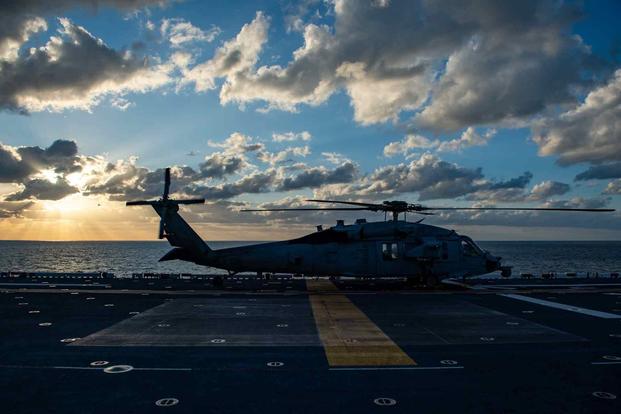The sea services have laid out potential requirements for a "light" amphibious ship, the top Marine general said this week, raising the possibility that the Navy's upcoming force-structure assessment will include new types of vessels.
The Navy and Marine Corps will still rely on big-deck amphibious assault ships, Commandant Gen. David Berger told shipbuilders and members of Congress at a Tuesday event hosted by the Amphibious Warship Industrial Base Coalition. But they're also going to need something new over the next decade, he added.
"We need a light amphibious warship -- a lot of them -- that we don't have today," Berger said.
The commandant declined to answer questions about how many Marines, aircraft and weapons those ships could carry, citing the yet-to-be-finalized force-structure assessment that will lay out the number and types of platforms the Navy will need in the next decade.
Berger also declined to say whether the new light amphibs would appear in that assessment.
"I can't answer that today," he said, " ... but between the Navy and Marine Corps, we have captured in rough terms the requirements, the specs."
Berger said at last month's Surface Navy Association symposium that the future amphibious ship "is beyond the classes of ships that we have right now." But he still stressed the need for a fleet of San Antonio-class amphibious transport dock ships, called LPD-17s, that are currently in production.
The commandant on Tuesday called the LPD-17 "the mothership, the quarterback in the middle." The Navy plans to buy one of them 2021. The ship can carry MV-22B Osprey aircraft and its well deck can launch and recover two Landing Craft Air Cushion hovercraft -- all of which can ferry Marines ashore.
Still, he added, the sea services are going to need more ships that move frequently as they face distributed operations in the vast Pacific theater, where China is militarizing man-made islands. Deterring the Chinese is likely going to require entirely new classes of warships, Rep. Mike Gallagher, a Wisconsin Republican, said at Tuesday's congressional forum.
Shipbuilders, the congressman told the audience, should view that as an opportunity.
"New classes of ships do not have to mean less work," Gallagher said. "In the case of the future amphibious fleet, because I believe we need more potentially smaller amphibious vessels, it might actually mean more work."
Related: Acting SecNav Hints at Fewer Aircraft Carriers in Next Ship-Count Plan
The Navy is taking heat on Capitol Hill over its plan to cut its shipbuilding budget in 2021. Rear Adm. Randy Crites, deputy assistant secretary of the Navy for budget, said changes that come out of the new force-structure assessment are likely to affect the 2022 budget.
The potential for new ship classes isn't the only switch to the assessment. Acting Navy Secretary Thomas Modly said last month that the proposal would likely be updated often, and that leaders had been directed to assess the ships it needs in the next 10 years, rather than 30 as had been done in similar reviews.
This is also the first time Navy and Marine Corps leaders have worked on the proposed ship counts together. Top leaders with both services say they're committed to working more closely than they had in the past two decades during the wars in Iraq and Afghanistan.
-- Gina Harkins can be reached at gina.harkins@military.com. Follow her on Twitter @ginaaharkins.
Read More: The Navy Is Making Big Changes to the Way it Plans for Future Ships












